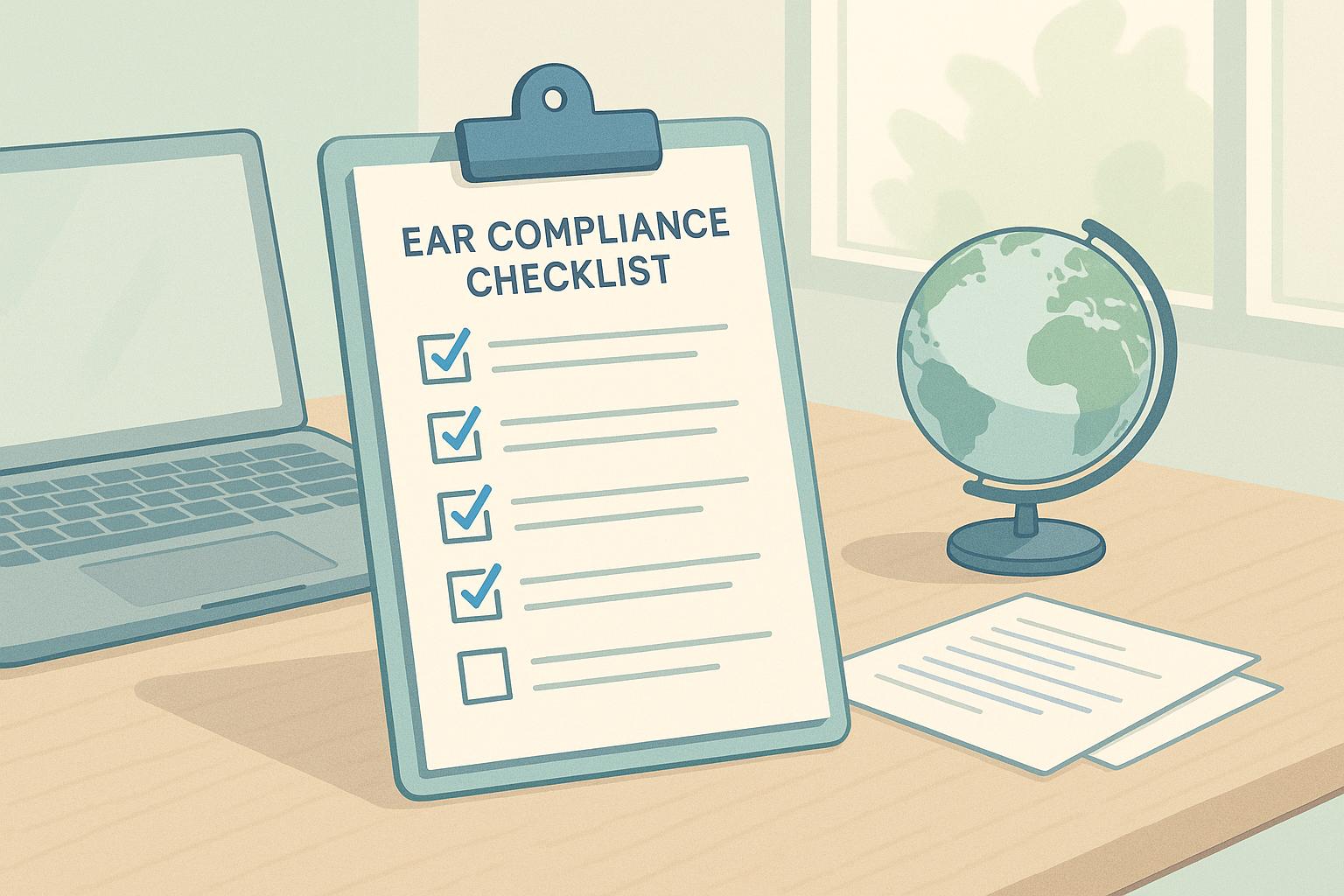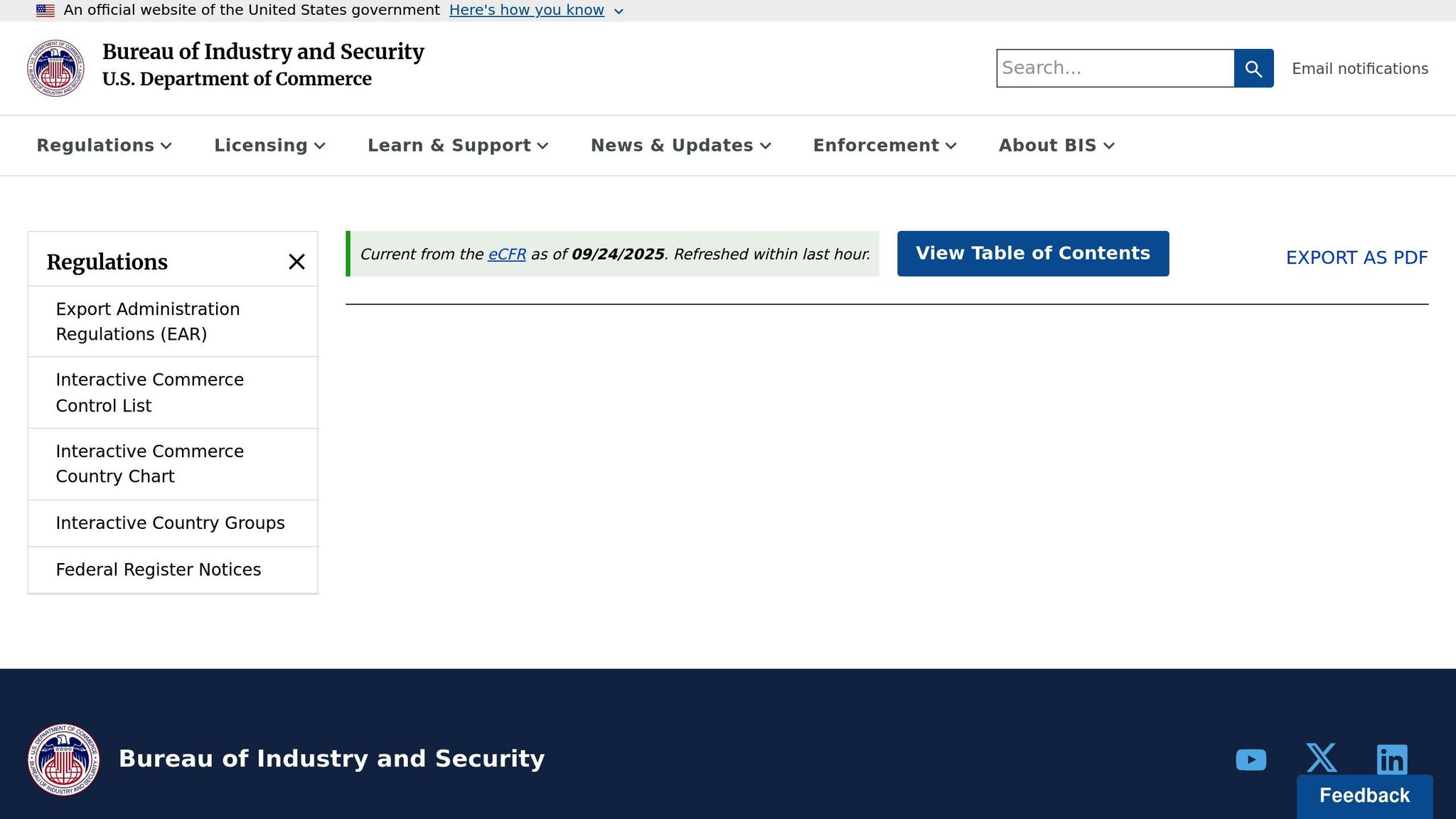App Risk Management (ARM) is the process of identifying, assessing, and mitigating potential risks associated with software applications. It ensures applications are secure, stable, and compliant with industry regulations.
ARM involves four key stages:
- Risk Identification: Identify potential risks like security flaws, performance issues, compliance violations, and operational disruptions.
- Risk Assessment: Evaluate the likelihood and impact of each identified risk.
- Risk Mitigation: Implement measures to address and mitigate identified risks, such as security controls, performance optimization, and contingency plans.
- Risk Monitoring: Continuously monitor the application for new risks and assess the effectiveness of mitigation measures.
By integrating ARM into the software development lifecycle, organizations can:
BenefitDescriptionEnhance Application SecurityIdentify and mitigate security vulnerabilities, reducing the risk of data breaches and cyber attacks.Improve Application PerformanceIdentify and address performance-related risks, ensuring optimal user experience.Ensure ComplianceIdentify and address compliance risks, ensuring adherence to relevant regulations and standards.Minimize Operational DisruptionsIdentify and mitigate risks related to application dependencies, infrastructure, and operational processes, minimizing downtime.
Effective ARM involves a collaborative effort between developers, security experts, project managers, and stakeholders. It requires a continuous and iterative approach throughout the application's lifecycle, from planning and development to deployment and maintenance.
Related video from YouTube
Understanding App Risk Management

App Risk Management (ARM) is a proactive approach to identifying, assessing, and mitigating potential risks associated with software applications throughout their lifecycle. It plays a critical role in ensuring successful app development by managing uncertainties that could impact the application's security, performance, and overall user experience.
ARM involves a comprehensive process of:
Risk Identification
Identifying potential vulnerabilities, threats, and risks that could affect the application, such as:
- Security flaws
- Performance issues
- Compliance violations
- Operational disruptions
Risk Assessment
Evaluating the identified risks based on their likelihood of occurrence and potential impact on the application, business operations, and stakeholders.
Risk Mitigation
Implementing measures and strategies to address and mitigate the identified risks, such as:
- Implementing security controls
- Optimizing performance
- Ensuring compliance
- Developing contingency plans
Risk Monitoring
Continuously monitoring the application and its environment for new or emerging risks, as well as assessing the effectiveness of the implemented mitigation strategies.
By integrating ARM into the software development lifecycle, organizations can proactively address potential issues before they escalate into major problems. This approach helps:
BenefitsDescriptionEnhance Application SecurityIdentify and mitigate security vulnerabilities, reducing the risk of data breaches, cyber attacks, and other security incidents.Improve Application PerformanceIdentify and address performance-related risks, ensuring that applications run smoothly and efficiently, delivering an optimal user experience.Ensure ComplianceIdentify and address compliance risks, ensuring that applications adhere to relevant industry regulations and standards.Minimize Operational DisruptionsIdentify and mitigate risks related to application dependencies, infrastructure, and operational processes, minimizing the potential for operational disruptions and downtime.
Effective App Risk Management is a collaborative effort that involves developers, security experts, project managers, and other stakeholders. It requires a continuous and iterative approach throughout the application's lifecycle, from planning and development to deployment and maintenance.
Steps in App Risk Management
App Risk Management involves a series of steps to identify, assess, and mitigate potential risks associated with software applications. These steps provide a comprehensive framework for managing risks in app development:
Identifying Risks
The first step is to identify potential risks that could impact the application, business operations, and stakeholders. This involves:
- Brainstorming sessions with cross-functional teams
- Conducting threat modeling and vulnerability assessments
- Reviewing industry trends, compliance requirements, and regulatory standards
- Analyzing historical data and incident reports
Evaluating and Prioritizing Risks
Once risks are identified, they need to be evaluated and prioritized based on their likelihood of occurrence and potential impact. This involves:
Risk CategoryDescriptionHighHigh-impact, high-likelihood risks that require immediate attentionMediumMedium-impact, medium-likelihood risks that require monitoring and mitigationLowLow-impact, low-likelihood risks that can be accepted or transferred
Developing Mitigation Plans
Developing mitigation plans involves creating strategies to address and mitigate the identified risks. This includes:
- Implementing security controls
- Optimizing performance
- Ensuring compliance
- Developing contingency plans
Monitoring Risks
Monitoring risks involves continuously tracking and assessing the application and its environment for new or emerging risks. This includes:
- Conducting regular vulnerability assessments and penetration testing
- Monitoring application performance and user feedback
- Reviewing industry trends and compliance requirements
- Updating the risk management plan to address new or emerging risks
Implementing Action Plans
Implementing action plans involves executing the mitigation strategies and plans developed earlier. This includes:
- Assigning responsibilities and tasks to team members
- Allocating resources and budgeting
- Establishing a timeline for implementation
- Monitoring and evaluating the effectiveness of the mitigation strategies
By following these steps, organizations can proactively identify and mitigate potential risks, ensuring the successful development and deployment of software applications.
Types of Risks in App Development
App development involves various types of risks that can impact the project's success. These risks can be categorized into three main types: technical, operational, and external risks.
Technical Risks
Technical risks are related to the development process and the technology used. These risks include:
RiskDescriptionPerformance issuesThe app may not perform as expected, leading to slow loading times, crashes, or errors.Security vulnerabilitiesThe app may be vulnerable to cyber attacks, data breaches, or unauthorized access.Incompatibility with devices or platformsThe app may not be compatible with certain devices or platforms, leading to usability issues.Bugs and errorsThe app may contain bugs or errors that can cause crashes, data loss, or other issues.
Operational Risks
Operational risks are related to the project management and team operations. These risks include:
RiskDescriptionResource allocationInsufficient resources, such as time, money, or personnel, can lead to project delays or scope creep.Team managementPoor team management, communication, or coordination can lead to project delays or errors.Change managementChanges to the project scope, timeline, or budget can lead to delays, cost overruns, or scope creep.Stakeholder managementPoor stakeholder management can lead to misunderstandings, miscommunication, or unrealistic expectations.
External Risks
External risks are related to factors outside the organization's control. These risks include:
RiskDescriptionMarket volatilityChanges in market trends, consumer behavior, or competitor activity can impact the app's success.Regulatory changesChanges to laws, regulations, or industry standards can impact the app's compliance or functionality.Economic changesEconomic downturns, recessions, or changes in global economic conditions can impact the app's success.Natural disasters or outagesNatural disasters, outages, or other external events can impact the app's availability or functionality.
By understanding these types of risks, organizations can proactively identify and mitigate potential risks, ensuring the successful development and deployment of software applications.
sbb-itb-8abf120
Mitigating Risks in App Development
Mitigating risks is crucial in app development to ensure project success. Effective risk management involves identifying, assessing, and prioritizing risks, and then implementing strategies to mitigate or manage them.
Avoiding and Reducing Risks
To mitigate risks, it's essential to avoid them altogether or reduce their impact. Here are some strategies to achieve this:
StrategyDescriptionConduct thorough requirement gathering and analysisIdentify potential risks early onDevelop a detailed project plan and timelineEnsure all stakeholders are aware of risks and can plan accordinglyImplement robust testing and quality assurance processesIdentify and fix defects early onUse agile development methodologiesIterate and refine the app in response to changing requirements and risks
Additionally, reducing risks can be achieved by:
- Breaking down complex tasks into smaller, manageable chunks
- Implementing risk-reducing technologies and tools
- Providing training and resources to team members
Transferring or Accepting Risks
In some cases, it may not be possible to avoid or reduce risks. In such cases, it may be necessary to transfer or accept the risks. Here are some strategies to achieve this:
StrategyDescriptionOutsource certain tasks or components to third-party vendors or partnersTransfer risks to better-equipped partiesPurchase insurance or warrantiesProtect against potential losses or damagesAccept the risks and develop contingency plansMitigate the impact of risks
It's essential to carefully evaluate the risks and determine the best course of action. Transferring or accepting risks can be a viable option, but it requires careful consideration and planning.
By implementing these strategies, organizations can effectively mitigate risks and ensure the successful development and deployment of software applications.
Benefits of Effective Risk Management
Effective risk management is crucial in app development as it leads to better development outcomes and overall project success. By identifying, assessing, and mitigating risks, organizations can avoid potential pitfalls, reduce costs, and improve the quality of their software applications.
Improved Project Predictability
Effective risk management helps project teams to identify and address potential risks early on, increasing project predictability and minimizing surprises. This allows for better planning, resource allocation, and stakeholder management.
Better Software Quality
By mitigating potential risks, project teams can ensure that their software applications are free from defects, vulnerabilities, and other issues that can compromise their performance and security.
Reduced Project Costs
Identifying and addressing potential risks early on helps project teams to avoid costly rework, delays, and other issues that can drive up project costs.
Key Benefits of Effective Risk Management
BenefitDescriptionImproved Project PredictabilityIncrease project predictability and minimize surprisesBetter Software QualityEnsure software applications are free from defects and vulnerabilitiesReduced Project CostsAvoid costly rework, delays, and other issues
In conclusion, effective risk management is essential in app development as it leads to better development outcomes, improved project predictability, enhanced software quality, and reduced project costs. By prioritizing risk management, organizations can ensure the successful development and deployment of their software applications.
Best Practices for App Risk Management
Effective risk management is crucial in app development. Here are some best practices to help organizations manage risks effectively:
Continuous Risk Assessment
Regularly identify, assess, and mitigate risks throughout the project lifecycle. This helps teams stay proactive, address potential risks early, and minimize surprises.
Clear Risk Communication
Communicate risks clearly to all project stakeholders, including team members, project managers, and customers. This ensures everyone is aware of the risks, their impact, and the mitigation strategies in place.
Documenting Risks
Maintain a record of all identified risks, mitigation actions, and their outcomes. This helps teams track their progress, identify patterns, and learn from their experiences.
By following these best practices, organizations can ensure their app development projects are well-managed, and their software applications meet the required quality and security standards.
Benefits of Effective Risk Management
BenefitDescriptionImproved Project PredictabilityIdentify and address potential risks early on, increasing project predictability and minimizing surprises.Better Software QualityEnsure software applications are free from defects and vulnerabilities.Reduced Project CostsAvoid costly rework, delays, and other issues that can drive up project costs.
By adopting these best practices, organizations can ensure the successful development and deployment of their software applications.
Key Takeaways
Effective app risk management is crucial for ensuring the success of your mobile applications. Here are the key takeaways to keep in mind:
1. Identify Risks Early
Identify potential risks early in the app development lifecycle. This helps you prepare for potential issues and minimize their impact.
2. Prioritize and Mitigate Risks
Prioritize risks based on their likelihood and potential impact. Develop and implement mitigation strategies to address high-priority risks effectively.
3. Monitor and Adapt
Risk management is an ongoing process. Continuously monitor and reassess risks throughout the app development lifecycle, as well as after deployment. Adapt your risk management strategies as new risks emerge or circumstances change.
4. Clear Communication and Documentation
Maintain clear communication channels with all stakeholders, including developers, project managers, and end-users. Document identified risks, mitigation plans, and outcomes to facilitate knowledge sharing and enable continuous improvement.
5. Best Practices
Adopt industry best practices for app risk management, such as continuous risk assessment, clear risk communication, and thorough documentation. Stay up-to-date with the latest security standards, development methodologies, and risk management frameworks.
By integrating effective risk management practices into your app development process, you can minimize potential threats, ensure the quality and security of your applications, and ultimately deliver a superior user experience.
Best PracticesDescriptionContinuous Risk AssessmentRegularly identify, assess, and mitigate risks throughout the project lifecycle.Clear Risk CommunicationCommunicate risks clearly to all project stakeholders, including team members, project managers, and customers.Thorough DocumentationMaintain a record of all identified risks, mitigation actions, and their outcomes.
FAQs
What are the risks of mobile apps?
Mobile apps face various security risks, including:
RiskDescriptionHardcoded PasswordsApps with hardcoded passwords or credentials are vulnerable to unauthorized access and data breaches.Insecure Data StorageSensitive data stored insecurely on the device or transmitted over unsecured channels can be intercepted.Client-Side InjectionsVulnerabilities like SQL injection, cross-site scripting (XSS), and command injection can allow attackers to execute malicious code.Weak Server-Side ControlsInadequate server-side security controls, such as weak authentication or authorization mechanisms, can expose sensitive data and functionality.
Proper security measures, including secure coding practices, encryption, and regular security testing, are crucial to mitigate these risks.
What should be an adequate risk management for a software development project?
Effective risk management for software development projects involves:
1. Risk Identification: Identify potential risks that could impact the project.
2. Risk Analysis: Evaluate the likelihood and potential impact of each identified risk.
3. Risk Mitigation: Develop and implement strategies to mitigate or eliminate high-priority risks.
4. Risk Monitoring: Continuously monitor and reassess risks throughout the project lifecycle.
5. Risk Communication: Maintain clear communication channels with all stakeholders to ensure transparency and effective risk management collaboration.
6. Risk Documentation: Document identified risks, mitigation plans, and outcomes to facilitate knowledge sharing and enable continuous improvement.
By following a systematic and proactive approach to risk management, software development projects can minimize potential threats, ensure project success, and deliver high-quality software solutions.

![App Risk Management: Complete Guide [2024]](https://cdn.prod.website-files.com/6398f0e8fa9fd060d0c39626/693ab789c65fbf73aef69949_6641c3432f926f2021749d65_6641bad0948977092a72fde0-9db5de575fa83bfc5e0a54f42010e2c0.jpeg)







